Elevated Knitwear: Exploring the Beauty of Garment Dyed Blanks
February 14 2024 – Ivan Rosario

Garment Dyed Blanks Made in LA
100% Cotton knitwear. Jerseys, French Terrys and Fleece
When it comes to knitwear, jerseys, French terry's, and fleece basics, 100% cotton is the go-to fabric. Known for its softness and breathability, cotton knitwear provides both comfort and style. Whether you're looking for a cozy sweatshirt or a lightweight tee, 100% cotton has got you covered.
Jerseys are the perfect choice for casual everyday wear, offering a balance between comfort and durability. French terry’s provide a slightly heavier option that is ideal for cooler weather or lounging around at home.
And if you want something warmer and cozier, fleece basics are the way to go. One of the significant advantages of using 100% cotton knitwear is its compatibility with garment dyeing techniques.
Garment dyed blanks involves treating finished garments rather than dyeing the raw fabric before construction. Which is that traditional blank suppliers do. Garment dyeing process gives an added dimension to the colors by creating unique variations and fades that cannot be achieved with traditional apparel methods.
With garment dyed sweatshirts or tees in heavyweights like these, you can expect rich tones that exude character. The Pantone TCX color range offers an extensive selection of hues to choose from – whether it's vibrant and bold or soft and muted.
The flexibility in color options allows brands to create their signature looks while maintaining consistency across their collection.
When it comes to garment dyed hoodies or distressed sweatshirts made from 100% cotton, you can expect stylish pieces with a vintage-inspired look. The sun-fade wash enhances this effect by providing a faded appearance that adds character to your wardrobe.
Whether you're going for a sporty look or simply want to elevate your casual style, 100% cotton knitwear, jerseys, French terry’s, and fleece basics offer endless possibilities. The versatility of these fabrics combined with the creativity of garment dyeing techniques allows for unique and personalized fashion choices.
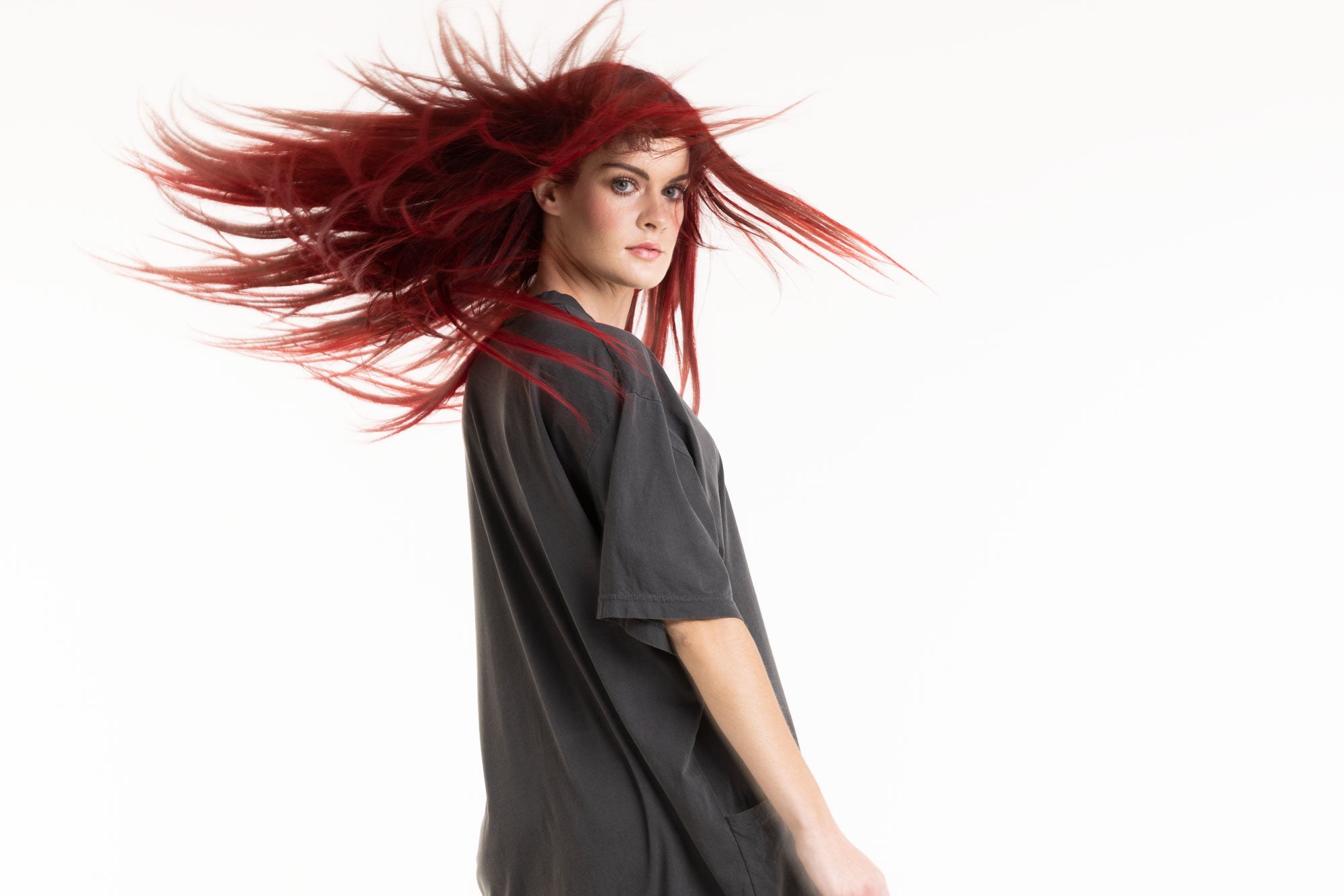
Why garment dyed is so cool?
Garment dyeing is like the secret sauce that adds a touch of awesomeness to your wardrobe. It's the process of dyeing pre-made garments, like tees, sweatshirts, and sweatpants, as opposed to dyeing the fabric before it's cut and sewn.
So why is garment dyed so cool? Well, let me count the ways.
Firstly, garment dyed pieces have this effortlessly cool and lived-in look that you just can't achieve with regular dyes. The process gives each item a unique character, with subtle variations in color and shading that make it stand out from the crowd.
Whether you're rocking a distressed sweatshirt or a washed tee, you'll definitely turn heads. Another reason why garment dyed is so cool is the incredible range of colors you can choose from.
With Pantone TCX as your guide, you have the freedom to pick any shade or hue under the sun. Want a vibrant neon pink tee?
No problem! Prefer a muted earthy tone for your hoodie?
You got it! The possibilities are endless when it comes to expressing the identity of your collection.
Not only does garment dyeing offer an extensive color palette, but it also allows for experimentation with different washes. Silicon wash benefits give garments a soft and smooth feel while maintaining their color integrity.
Cotton shrinkage during dyeing can be a potential issue, requiring careful testing and adjustments. Additionally, the complexity of dyeing pre-made garments can lead to inconsistencies in color distribution, making it more time-consuming and less predictable than traditional dyeing methods.
Garment dyed pieces are undeniably cool. From garment dyed tees to sweatshirts and sweatpants, this process adds a touch of uniqueness to your fashion collection that sets you apart from the crowd.
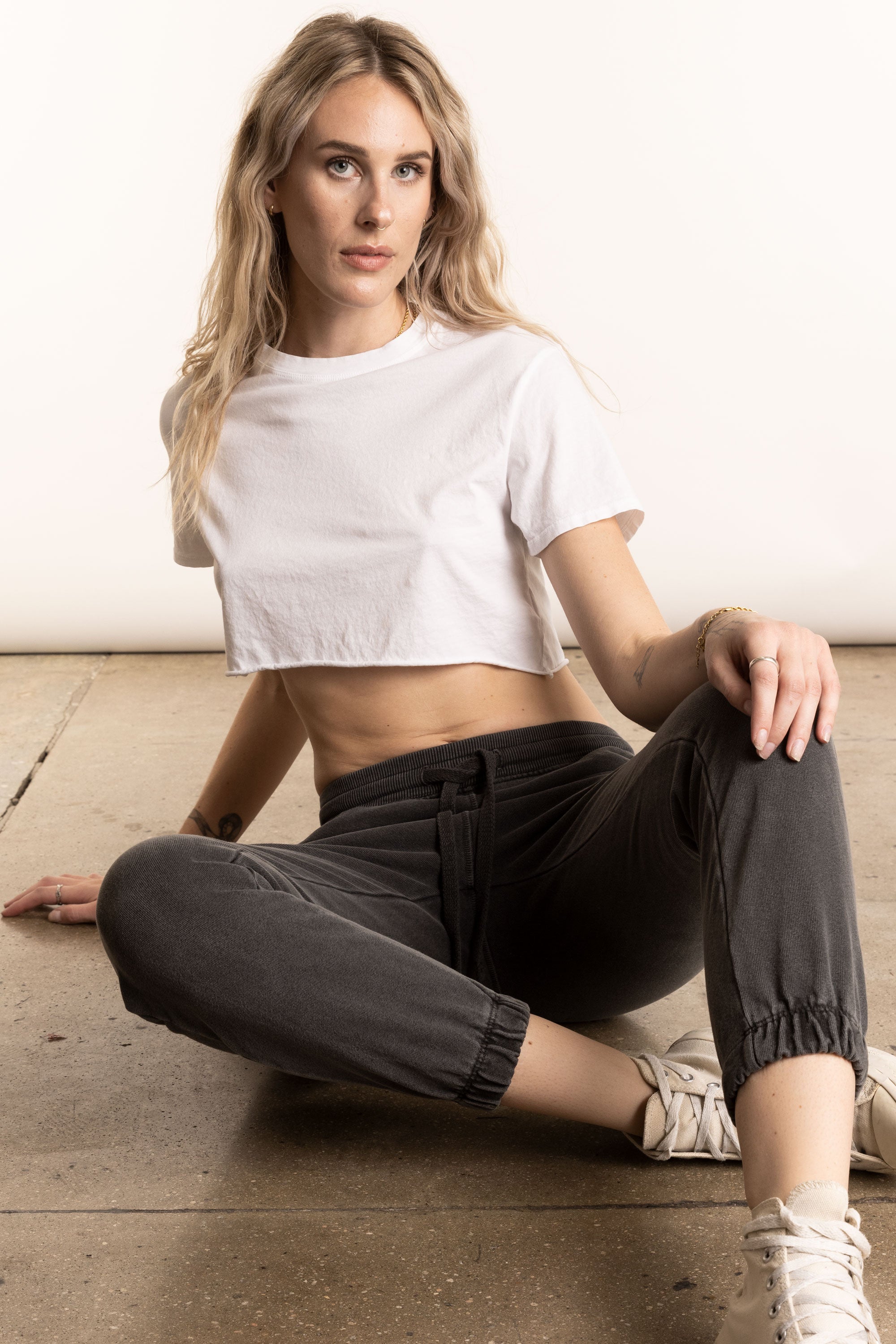
Pros and Cons of the Garment Dyed Process
The garment dyed blanks process comes with its fair share of pros and cons. Let's dive into them, shall we?
On the bright side, one of the biggest advantages of garment dyeing is the unique, lived-in look it gives to the garments. Distressed sweatshirts or tees with a sun-fade wash?
That's what garment dyed blanks can achieve effortlessly. This process allows for a wide range of colors and shades to be achieved, giving each piece a distinct character.
Plus, it gives you the freedom to choose any Pantone TCX shade that tickles your fancy. Another pro is that garment dyed clothing tends to be exceptionally soft and comfortable.
This is because most of these garments are made from 100% cotton which provide great breathability and durability. The fabric undergoes an enzyme wash or even a silicon wash during the dyeing process, resulting in garments that feel luxuriously soft against your skin.
However, as with anything in life, there are also some cons to consider. One drawback is that not all manufacturers prefer to involve themselves in the garment dyed process.
It requires extra steps and expertise compared to regular methods, making it more time-consuming and costly. This may explain why some apparel manufacturers shy away from offering garment dyed options.
Additionally, cotton shrinkage occurs during the garment dyeing process. To counter this issue, testing yards of 100% cotton before production begins becomes crucial for ensuring accurate sizing and fit.
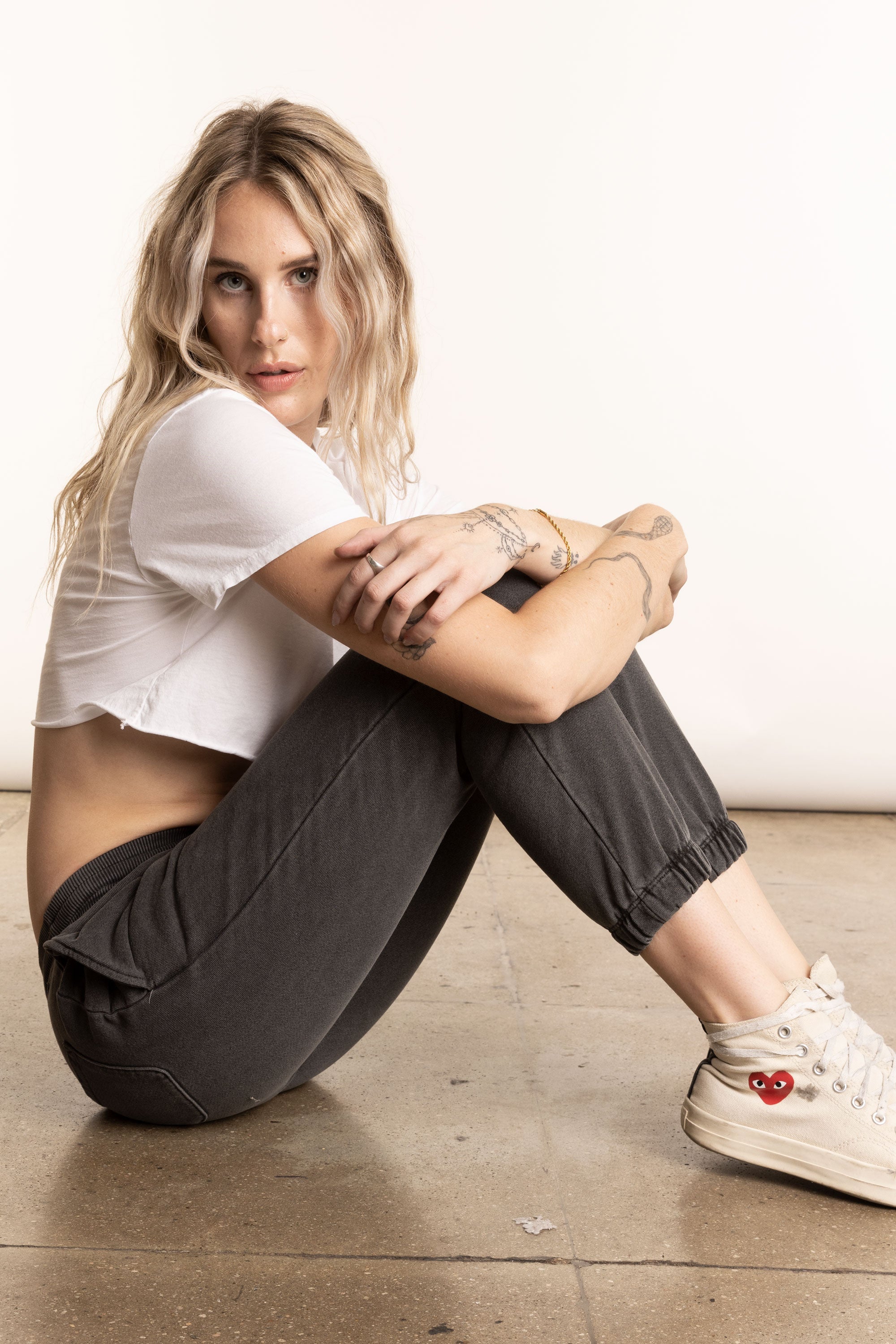
Why do most manufacturers prefer not to be involved in the garment dyed process?
Most manufacturers, despite the growing popularity of garment dyed blanks, prefer not to involve themselves in the garment dyeing process. There are a few reasons for this reluctance. Firstly, garment dyeing can be a labor-intensive and time-consuming process.
Garments are dyed after they have been cut and sewn, which adds significant complexity to the production line. This can slow down the overall manufacturing process and increase costs.
Color consistency can be challenging to achieve when using different fabric batches. The shades might vary slightly from one piece to another due to variations in absorption rates.
Furthermore, there is always a level of unpredictability involved in the garment dyeing process.
While many manufacturers may choose not to engage in the laborious process of garment dyeing due to its complexities and potential risks involved, it is worth noting that the demand for these unique, customized products is on the rise. As consumers increasingly seek out distinctive garments like garment dyed sweatshirts, hoodies, tees, and sweatpants, manufacturers may need to reconsider their stance on this dyeing technique to stay competitive in the evolving fashion industry.
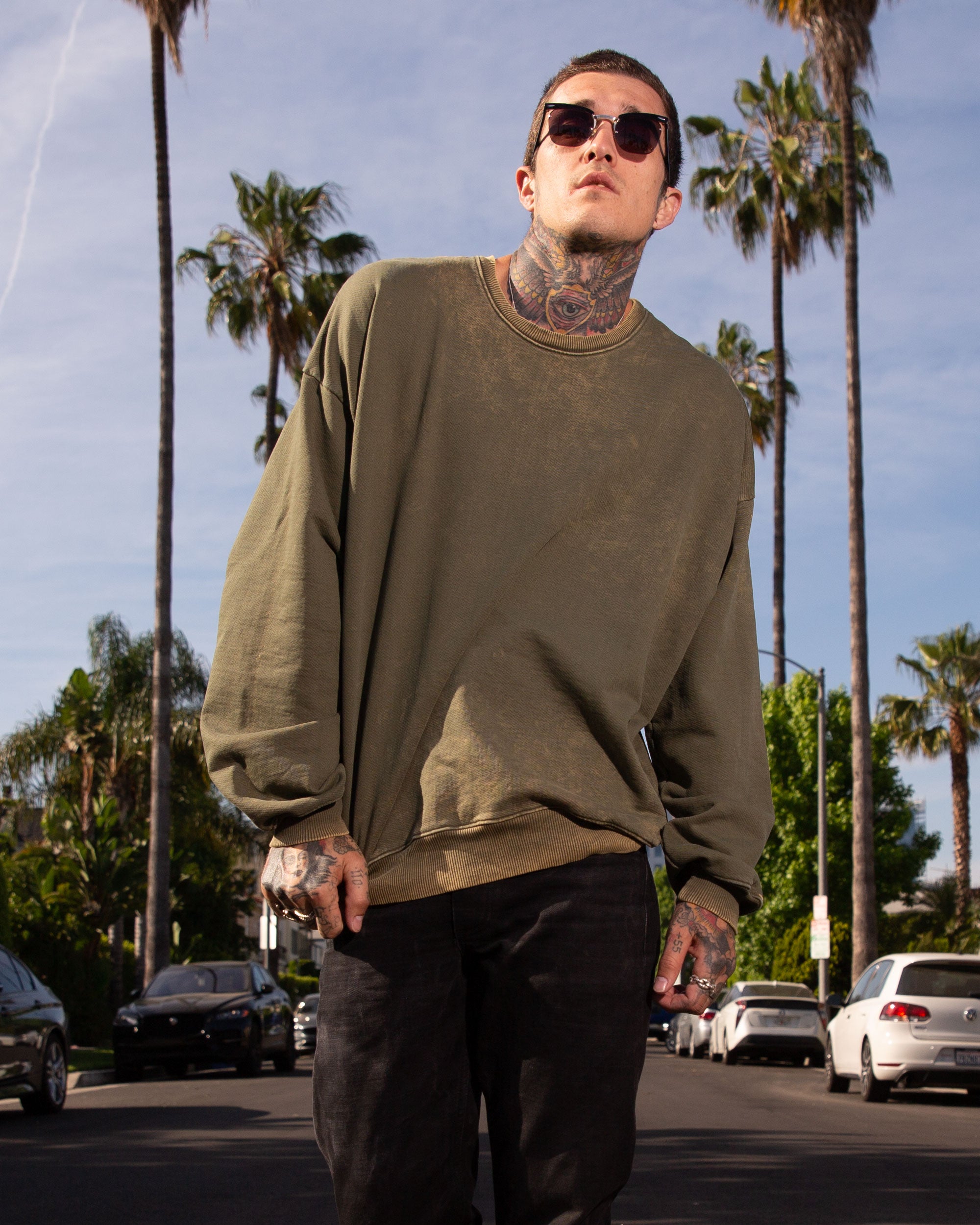
Freedom to choose any Pantone TCX of your choice
When it comes to garment dyed knitwear, one of the fantastic advantages is the freedom to choose any Pantone TCX color of your choice. This means you can dive into a vast spectrum of colors and find the perfect shade that suits your collection. Whether you're looking for vibrant and eye-catching hues or subtle and muted tones, the options are virtually endless.
Imagine being able to customize your collection with garment dyed hoodies, sweatshirts, sweatpants, and Tees in any color imaginable. You can go for bold and striking shades like Pantone TCX 18-1664 (Fiesta Red) or opt for more calming tones like Pantone TCX 15-0343 (Greenery).
The choice is entirely yours. Garment dyeing allows this versatility by enabling manufacturers to create individual pieces with specific Pantone TCX colors.
Unlike traditional methods where fabric is dyed before cutting and sewing into garments, garment dyeing allows for a more precise color application on finished garments. This process lets each piece have its unique character while maintaining consistent color throughout the collection.
The ability to select any Pantone TCX color also means that brands can experiment with trending hues season after season or even create their own signature shades. It provides an excellent opportunity for designers to showcase their creativity and stand out from the crowd.
The possibilities are truly endless. Being able to choose any Pantone TCX color of your choice when it comes to garment dyed knitwear opens up a world of creative possibilities.
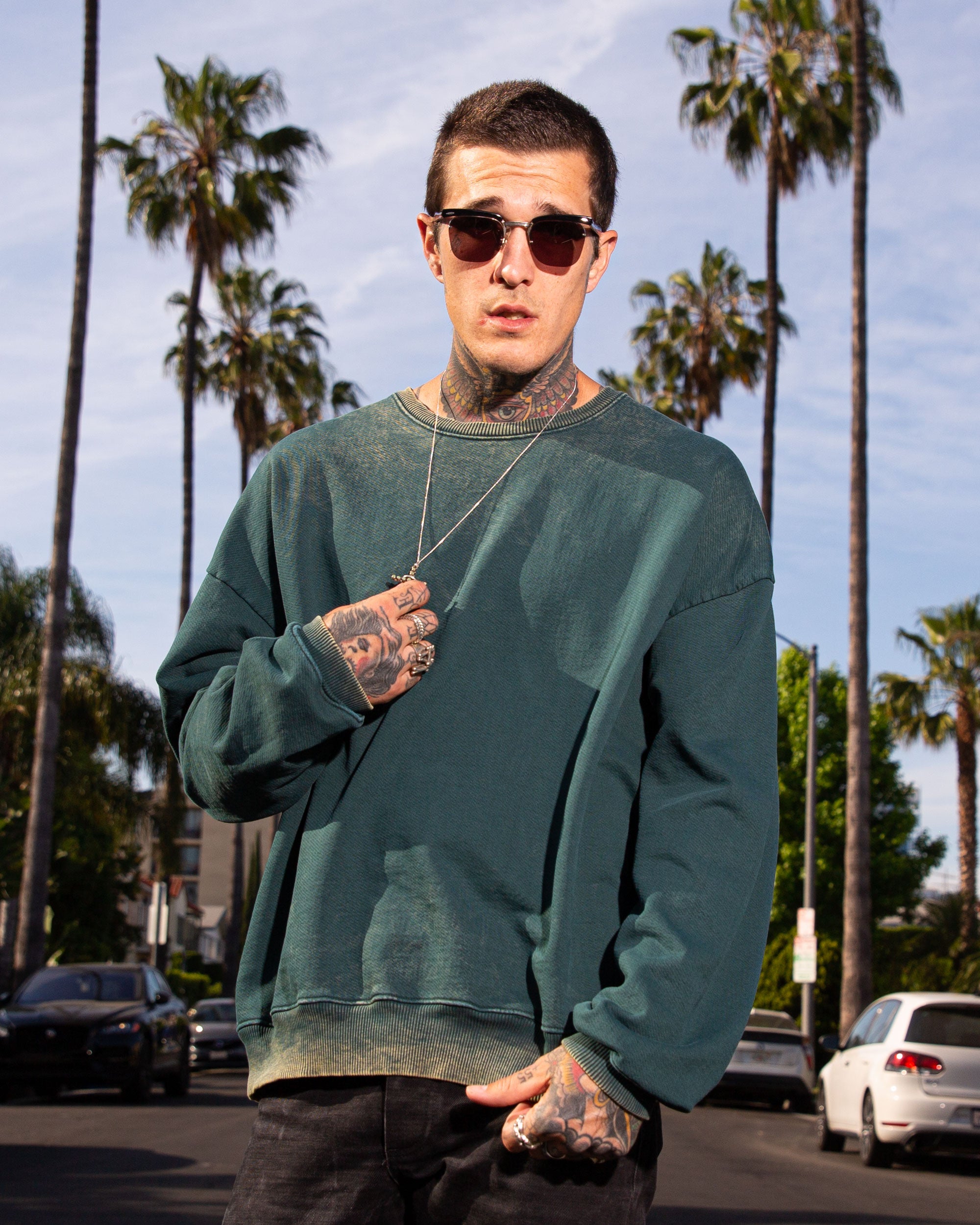
Why brands are starting to pay more interest in garment dyed basic garments?
In recent years, there has been a noticeable shift in the fashion industry towards brands showing a keen interest in garment dyed basic garments.
One of the key reasons behind this growing interest is the versatility and uniqueness that garment dyed pieces offer. Independent brands and Instagram stores are embracing the freedom that comes with choosing any Pantone TCX color for their garments. This allows them to create custom hues and shades, ensuring that their clothing stands out from the crowd.
Another factor is the distressed aesthetic that garment dyeing imparts on sweatshirts and other apparel items. Distressed sweatshirts, with their worn-in look and faded colors, have become highly sought-after by consumers looking for a vintage-inspired style.
By utilizing heavyweight 100% cotton blanks, these independent designers and influencers can create products that look great in social media engagement.

Cotton Shrinkage in the Garment Dyeing
An important factor to consider when it comes to garment dyed knitwear, particularly with 100% cotton, is the issue of shrinkage. This is because cotton has natural properties that make it susceptible to shrinking when exposed to heat and moisture. When the garment dyed blanks are subjected to the dyeing process, they go through washing and drying at high temperatures.
To mitigate this issue, manufacturers have take into account the potential shrinkage during production doing shrinkage tests but always be aware about a 3% tolerance. Garment dyed shrinkage is never 100% predictable.
It's worth noting that some brands even intentionally size up their garment dyed tees or sweatshirts slightly to accommodate for this expected shrinkage. However, it's crucial for brand owners to be educated of this characteristic when they order garment dyed knitwear made from 100% cotton.
What is PFD cotton fabric?
PFD stands for "prepared for dyeing," and it refers to a cotton fabric that has undergone scouring, bleaching and equalizing processes.
Essentially, it is a blank canvas waiting to be transformed by the magical touch of color. PFD cotton fabric is highly sought after in the garment dyed industry because it offers a pristine and pure base for dyeing.
Scouring is the primary process carried out in order to remove waxes and pectins. This process makes the textile more water-absorbent. Bleaching is a chemical process in which the natural color, odor and other impurities of the greige material (raw cotton) is removed. Finally, equalizing ensures that the effluents have uniform characteristics in terms of pollution load, pH and temperature.
Final Words
Garment dyed blanks offers a world of possibilities for fashion enthusiasts and brands alike. The process allows for vibrant color choices, including the freedom to select any Pantone TCX shade that suits your style.
While some manufacturers may shy away from garment dyeing due to the complexities it presents, the popularity of this technique is on the rise. Many new and independent brands have recognized its appeal and are producing high-quality garment dyed basics such as T-shirts, sweatshirts, and sweatpants.
Additionally, the use of 100% cotton fabric ensures comfort and breathability. Garment dyed knitwear presents an exciting avenue for self-expression through fashion. Brands willing to embrace this technique can offer their customers one-of-a-kind pieces that stand out from mass-produced alternatives.
With an array of dye options and customization techniques available, there's no limit to creativity when it comes to designing trendy and comfortable garments like garment dyed hoodies or tees. So why settle for ordinary when you can embrace the extraordinary with this unique garment process?

1 comment
Thank you for your inquiry. I would like to know if you do offer 50/50% Cotton or 100 % cotton blank T-shirts. Below are the details for the sizes and colors that i will need.
Orange (Small, Medium) 100/100 pieces
White (Small, Medium, Large) 100/100/100 pieces
Black (Small, Medium, Large) 100/100/100 pieces
Regarding payment, If credit card surcharges may apply, Please provide a detailed breakdown, including sales tax and shipping fee within the State.
Looking forward to your reply.
Best Regards